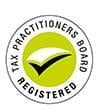Repairs & Maintenance, Capital Expenditure and Improvements
Repairs and maintenance
You may be able to claim a full deduction for the cost of repairs and maintenance in the year that you incur them if:
- the expense directly relates to wear and tear or other damage that occurred as a result of renting out property, and the property
- continues to be rented on an ongoing basis
- remains available for rent but there is a short period when the property is unoccupied – for example, where unseasonable weather causes cancellations of bookings or advertising is unsuccessful in attracting tenants.
For more detail on capital expenditure and improvements, see Rental expenses you claim over several years
Watch: This video explains what you need to know before claiming a deduction for repairs and improvements to your property.
What you can claim immediately
Repairs
Repairs means working to make good or remedy defects in, damage to or deterioration of the property. Generally, repairs must relate directly to wear and tear or other damage that occurred as a result of renting out the property.
Examples of repairs include:
- replacing broken windows
- replacing part of the gutter damaged in a storm
- replacing part of a fence damaged by a falling tree branch
- repairing electrical appliances or machinery.
Maintenance
Maintenance means work to prevent deterioration or fix existing deterioration. Maintenance generally involves keeping your property in a tenantable condition.
Examples of maintenance include:
- repainting faded or damaged interior walls of a rental property
- oiling, brushing or cleaning something that is otherwise in good working condition – for example, oiling a deck or cleaning a swimming pool
- maintaining plumbing.
What you can claim over several years
Repairs and maintenance unrelated to wear and tear or damage
You can't claim the total costs of repairs and maintenance in the year you paid them if they did not relate directly to wear and tear or other damage occurring due to renting out your property. These are capital expenses you may be able to claim over a number of years as capital works deductions or deductions for decline in value.
See also:
Improvements
You can't claim a deduction for the total cost of improvements to your rental property in the year you incur them.
An improvement is anything that makes an aspect of the property better, more valuable, more desirable or changes the character of the item on which works are being carried out.
Capital improvements (such as remodelling a bathroom or adding a pergola) should be claimed as capital works deductions.
Improvement means work that:
- provides something new
- generally furthers the income-producing ability or expected life of the property
- goes beyond just restoring the efficient functioning of the property.
Improvements can be either capital works where it is a structural improvement or capital allowances where the item is a depreciating asset.
Example: Property improvements
Tim replaced a fibre cement sheeting wall inside his property because it was damaged by tenants. He replaced the old wall with a brick feature wall.
The new wall is an improvement because Tim did more than just restore the efficient function of the wall. This means Tim cannot claim the cost of the new wall as a repair, but he can claim it as capital works deductions.
However, had Tim replaced the fibro with a current equivalent, such as plasterboard, he could have claimed his costs as a repair. This is because it would have merely restored the efficient function of the wall without changing its character, even though a different material was used.
End of exampleRepairs vs improvements
If you conduct a project that includes both repairs and improvements to your property, you can only claim an income tax deduction for the cost of your repairs if you can separate the cost of the repairs from the cost of the improvements.
If you hire a builder or other professionals to carry out these works for you, we recommend you ask for an itemised invoice to help work out your claim.
Example: Apportioning expenses between repairs and improvements
Caitlin has modernised her rental property by hiring tradespeople to render and paint the external walls. She also asked the painter to paint the internal walls, which had deteriorated during the time she rented out the property.
As Caitlin requested an itemised invoice from the painter, she could separate the cost of the internal and external painting, and rendering. Due to this, she could claim an income tax deduction for the cost of painting the internal walls as a repair. She could claim the costs for the external walls as capital works deductions.
End of exampleIt is important to correctly categorise each expense you incur to ensure it is treated correctly for tax purposes. Our quick reference guide in the table below will help you to determine which category your expense relates to.
Situation | Category | Example | Claim at |
|---|---|---|---|
Replacing something that is worn out, damaged or broken as a result of renting out the property | Repair | Replacing part of a fence damaged in a storm Hiring a plumber to fix a leaking tap
| Repair and maintenance |
Preventing or fixing deterioration of an item that occurred while renting out the property | Maintenance | Repainting faded interior walls Re-oiling a deck
| Repair and maintenance |
Repairing damage that existed when the property was bought (whether it was known at the time of purchase or not) | Initial repair | Fixing floor boards that had damage when the property was bought | Capital works or Capital allowances |
Purchasing an entire structure that is only partly damaged | Capital works | Replacing all the fencing, not just the damaged portion | Capital works |
Renovating or adding a new structure to the property | Capital works | Adding a carport | Capital works |
Installing a brand new appliance, floor or window covering | Depreciating asset | Buying a new dishwasher Installing new carpet
| Capital allowances |


































